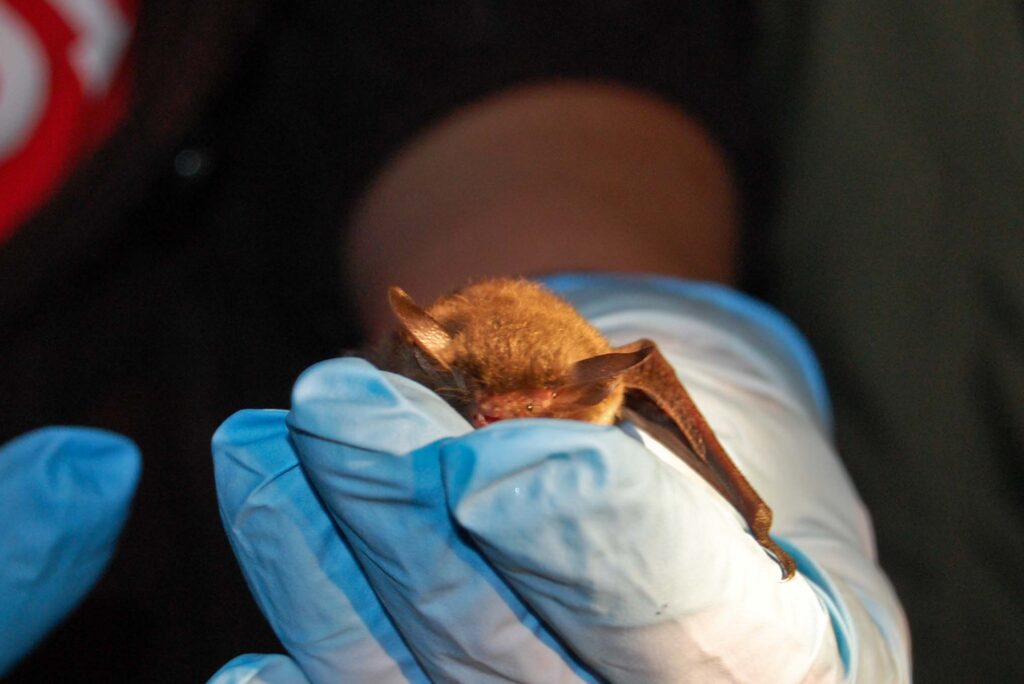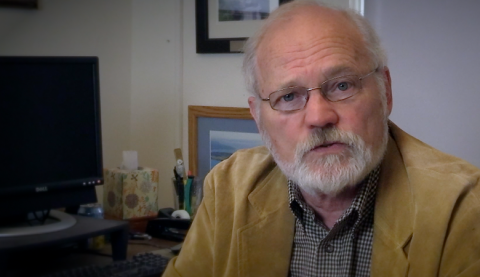The January meeting of the Vermont Endangered Species Committee included a three-and-a-half-hour discussion of the risks posed to endangered bats by BLSG’s roadside spraying of pesticides. It was a long discussion because eight presenters were on the agenda. Four presenters were from the Vermont Department of Fish & Wildlife (VT F&W) and none of them expressed concern that the risk to bats was sufficiently serious to merit any immediate action. Three of the other speakers argued strongly that the risk to bats on the Vermont endangered species list constituted a “take” which would mean that BLSG was violating Vermont law unless VT F&W granted them an incidental take permit.

Pat Parenteau, Professor of Law at Vermont Law School, explained that VT F&W had been presented with a convincing case, in the form of a 20-page report, that bats are at substantial risk. The Arrowwood Report laid out the scientific case that the unique biology of bats made them highly vulnerable to BLSG’s mist of chemical droplets sprayed at night along roads through some of Vermont’s most important bat feeding-habitat. Parenteau said, “Spraying of pesticides down … miles of roadway with a fog of toxic chemicals, where a concentration of bats are flying through them, … that’s obviously a situation where the risk is clear. It’s not speculative, it’s not hypothetical, it’s not negligible.”

The independent biologists on the Endangered Species Committee and its Scientific Advisory Group for Mammals all seem to agree that this risk is considerable. According to Parenteau, having been presented with this credible evidence, it falls on VT F&W to make the case that the Arrowwood Report and the scientists who agree with it are wrong, “The only determination here that a permit would not be required would be proof of no harm, no credible threat of harm to the species.”
The task of presenting this proof was assigned to Alyssa Bennett, VT F&W’s Small Mammal Biologist. Bennett made the argument that there is little published science about how bats react to BLSG’s pesticides, and it is therefore impossible to know how much of a threat they pose to Vermont’s endangered bats. But Bennett ignored the argument in recent scientific literature, and made clearly in the Arrowwood Report, that bats’ unique biology makes them more susceptible to these pesticides than the limited research suggests. Bennett tried to present a case that the Arrowwood Report was weak, or faulty, or incomplete, but each of these arguments failed to survive even cursory scrutiny. As Parenteau said, “The Jeff Parsons [Arrowwood] report, with all due respect to Alyssa, I don’t think what I’ve heard from Alyssa fundamentally undermines the conclusion of the Parsons report that the exposure of the bats is predictable, it’s foreseeable, that the chemical contents of the pesticides have been found to present at least the risk of injury to bat species.”
None of the other presenters at the meeting offered evidence that risk to bats from BLSG’s pesticides was trivial. Catherine Gjessing, the General Counsel for VT F&W, concluded that risk was negligible, but her statement was tied directly to Bennett’s presentation, “But what we don’t know is exactly what the impacts are. And there’s no evidence that there’s going to be a significant or discernible adverse impact here. At least not based on what I think Steve and Alyssa said.” Steve Parren did not present evidence about the level of risk, and Bennett’s presentation included no valid evidence of low risk to bats. Therefore, Gjessing’s conclusion is without scientific foundation. As Parenteau said about evidence that BLSG’s pesticides offer no threat to bats, “That simply doesn’t exist.”
So at this meeting, as happened at the September 2020 meeting, VT F&W failed to invalidate the conclusion of the Arrowwood Report. That report remains the best evidence we have of the probable level of risk to endangered bats in the BLSG District. This leaves VT F&W in a difficult position. Apparently they have already decided that they do not want to require an incidental take permit for BLSG. Unable to counter the scientific consensus that a permit is appropriate, they need another justification for taking no action.
Bennett suggested an alternate approach, “…why isn’t there an effort to do some things that would reduce bat threats, rather than to suggest that they should be permitted and allowed?” This seems like a good idea. Residents of the towns in the BLSG District do not want VT F&W to give BLSG official permission to harm endangered bats. They want VT F&W to work with BLSG to make sure everything possible is being done to minimize the risk to bats.
Unfortunately, VT F&W has only one powerful mechanism to regulate BLSG’s activities — the incidental take permit. If VT F&W refuses to use that mechanism, they have no other authority to alter what BLSG is doing. Their opposition to requiring an incidental take permit is a surrender of their responsibility to protect these endangered bats.
Bennett’s distinction between permitting a risky activity and changing that activity to reduce the risk does not ordinarily exist. An incidental take permit is granted only after VT F&W staff work with the permit applicant to find out if modifying the operation could reduce risk. Gjessing explained, “Once we determine that a permit is required, we do have an avoidance and minimization process where we look at the activity and the species and the location and we try to come up with conditions that can avoid and minimize the potential impacts to the maximum extent possible, and we also have the authority to impose mitigation.” That is a great strength of an incidental take permit. The administration and staff of the BLSG District know nothing about bats and would not know how to reduce the risk of their operation. Requiring an incidental take permit could ensure that the expertise at VT F&W is applied to designing a plan that minimizes risk to listed bats while continuing the public service BLSG provides.
Ordinarily, Vermont’s Agency of Agriculture (VT AAF&M) would have the authority to regulate this type of pesticide use. However, VT AAF&M has no specific regulations for the roadside spraying of pesticides to control mosquitoes, and therefore has little authority to modify BLSG’s spraying operation. Even if those regulations are updated, VT AAF&M also has no expertise in endangered species protection — that is the domain of VT F&W. For example, VT AAF&M’s current pesticide regulations mention the words “endangered” and “threatened” only once; they are in a list of definitions but are never used in the text of the document. There is no department or agency other than VT F&W that could ensure the protection of endangered bats if VT F&W abandons the task.
If VT F&W does not require that BLSG have an incidental take permit, it is effectively granting permission for BLSG to continue even those parts of its operation that present the greatest threat to bats. Without a permit there will likely be nothing done to reduce the number of times state-listed bats fly through a plume of pesticides drifting over what is arguably the best bat habitat in Vermont. Relinquishing its responsibility to protect these bats does not seem like sound judgment on the part of VT F&W leadership.

